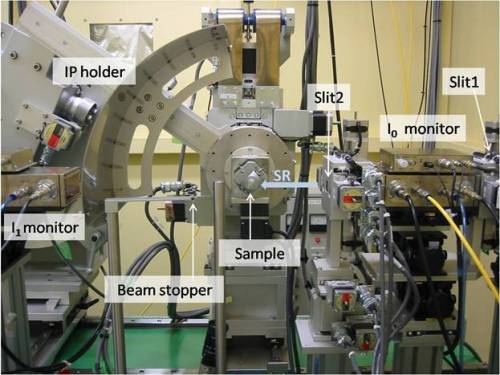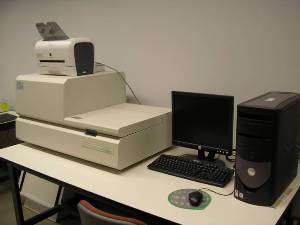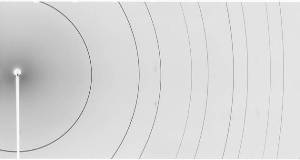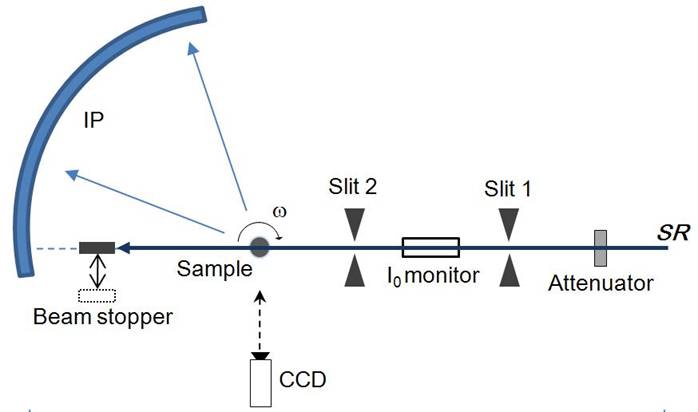- HOME
- SAGA Light Source
- User Information
- Beamlines
- BL15 : experimental equipment
BL15 : experimental equipment
Debye-Scherrer camera
A transmission-geometry powder diffractometer, Debye-Scherrer camera is now available in the BL15 experimental hutch (Table 1 & Figs. 1, 2). As a detector, the camera has an imaging plate (IP) on the 2θarm. A powder sample is sealed in a glass capillary with a diameter of 0.1-0.5 mm and rotated at a speed of ~60 rpm during measurements. The station is equipped with an off-line IP reader (Fig. 3). The two-dimensional diffraction image (Fig. 4) can be transformed into one-dimensional powder diffraction data using image-analysis software. NIST standard reference materials (SRMs), silicon powder (640c) and lanthanum hexaboride powder (660a), are also available for use as line position standards.
Table 1. Properties of diffractometer
|
Camera length |
286.5 mm |
|
Measurement range (2θ) |
5~75°, 0.01º step* |
|
Detector |
Imaging plate (IP) |
|
IP size |
400 (H) × 200 (W) mm2 |
|
Capillary diameter |
0.1~0.5 mm |
*Measurement range can be extended to higher angles (~120°) by moving the 2θ arm and exchanging the IP.
 Fig. 1 Debye-Scherrer camera installed in BL15. |
|
 Fig. 3 IP reader system Fujifilm Co. Ltd. BAS2500. |
 Fig. 4 Debye-Scherrer rings obtained from NIST SRM640c silicon powder on the imaging plate using an X-ray energy of 12 keV. |
